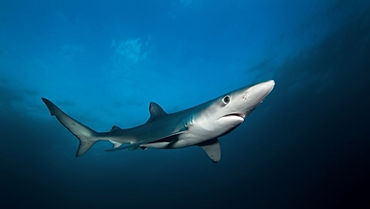By: Samuel Lin
Rays of sun penetrate through the waters, illuminating the aqua blue waters. A gray shark with a white belly swims to and fro, tail flicking. Suddenly, the sharks feels a little tingle in his sense – a fish was moving in the water, creating a small electric pulse. The shark located the fish and darted after the fish, using the fish’s electric field to track it down and kill the prey.
In 2015, researchers at Fishtek Marine developed the first prototype of SharkGuard, which sends out electric fields that the sharks can sense to protect them from longline fishing rigs.
Many sharks, such as the Scalloped Hammerhead, Oceanic Whitetip, and Blue Shark, are caught as bycatch when the sharks accidentally bite bait meant for fish. 11 to 13 million sharks are killed from bycatch annually worldwide; 87 million skates and rays are killed as well.
“There is an urgent need to reduce bycatch, which not only kills millions of sharks and rays each year but also costs fishers time and money,” said Dr. Phil Doherty, who works at the University of Exeter for the Department of Ecology and Conservation.
Sharks have electroreception, meaning they can sense electric fields.. They do so with the ampullae of Lorenzini, an organ near their heads. Since sharks’ other senses are not so keen, they rely on this special sense when hunting. When fish create electric pulses as they move through the water, sharks can sense it and chase after the fish.
Sharks have a very keen sense of electricity; if two AA batteries were connected 1000 miles away, a shark could sense it easily. SharkGuard overstimulates the shark’s electroreception sense, scaring it away from the bait.
A study on SharkGuard done by Dr. Phil Doherty, published in Current Biology, found that when using SharkGuard, the bycatch rate of blue sharks dropped by 91%, while the bycatch rate of stingrays dropped by 71%. The fishermen benefited from this by having less damage to their fishing material and less wasted bait.
“SharkGuard is an example of where, given the appropriate backing, it is possible to roll the solution out on a sufficient scale to reverse the current decline in global shark populations,” said Pete Kibel, director of Fishtek Marine.
However, SharkGuard is not the perfect solution. SharkGuard did slightly lower the catch rates of the targeted fish, like tuna. Furthermore, SharkGuard also requires daily battery recharges. Scientists are working on making SharkGuard self-powered to solve this.
Many endangered shark species are not only threatened by bycatch but by intentional catch. Blue Sharks, Oceanic Whitetips, and other sharks are slaughtered to make shark fin soup, a delicacy in Asia. Human Society International (HSI) found that 72 million sharks are killed annually for their fins.
Sources:
https://www.sciencenews.org/article/device-electric-field-scare-sharks-fishing-hooks
https://www.nbcnews.com/id/wbna24484864
https://www.theguardian.com/environment/2022/nov/21/new-gadget-could-reduce-shark-bycatch-by-90











